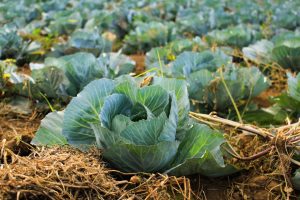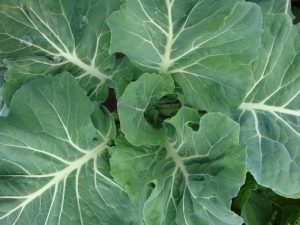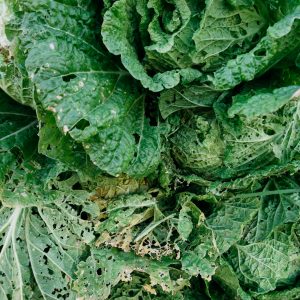Are you tired of following a million steps in cabbage cultivation? Don’t worry, We have curated the 15 most important steps needed to follow for getting higher cabbage production.
A brief guide to the 15 important steps to boost cabbage production which covers all necessary aspects of cabbage farming.
Table of Contents
Introduction to cabbage cultivation
- Climate and soil for high-yield
- Selection of site and land preparation
- Selection of premium variety cabbage
- Suitable season for plantation
- Increase Cabbage left growth
- Plantation tips
- Fertilization
- NPK Fertilization
- Reason behind small or no head
- Reason behind holes in leaf and wilting in Cabbage
- Spacing between plants
- Irrigation technique
- Pests and diseases in cabbage plant
- Harvesting for cabbage plant growth
FAQs
- What type of manure is suitable for cabbage plants?
- Name the high-yield variety of cabbage plants.
Introduction to cabbage cultivation
Cabbage is an annual crop and is cultivated globally in different regions. Cabbage’s various colors include green, red, purple, and white. The white and red color has low availability, but green and purple are found almost across the globe.
The cabbage plant is an annual leafy plant that varies due to size, quality, growing & maturity phase, and transplant season. After potatoes, Cabbage is the second largest green vegetable crop and the most popular daily.
Quality, taste, and shelf life can be boosted by following a proven roadmap of 15 steps. Without further ado, let’s jump into the article.

1. Climate and soil requirement
Sandy, medium-textured and heavy soil that is moist and eliminates water logging is ideal for cabbage plants. Fertilizers, organic matter, compost, and manure rich in nutrients are required to grow high-yield cabbage. The early phase plant prefers light soil with moisture, and the last stage prefers heavy soil.
Fertilizer, soil, and climatic conditions play a significant role in the cabbage’s quality production and maximum growth. The farmer must test the soil’s pH level as it directly affects its nutrients, growth rate, and microorganism activity.
2. Selection of site and land preparation
Choose a farm with no history of growing Cole crops such as Cabbage, broccoli, cauliflower, and Brussels sprouts. It will prevent the disease from attacking the cabbage plant early on. Treat the soil with aged compost, manure, and organic matter, nutrients to the crop at the initial stage.
3. Selection of premium varieties
Savoy, red and green is the three wide varieties of cabbage plants. Savoy cabbage plant is yellow-green with high yield; the green cabbage plant is a combination of light-dark green, and the red cabbage is crimson-purple in color with smooth texture.
4. Suitable seasons for plantation
Climatic conditions, method of farming, variety of cabbage plants, and area of farming decide the suitable season for cabbage cultivation. Like, in the plains, July-November is convenient, and April-August is ideal for hilly regions.
5. Increase Cabbage growth
Before planting, treatment includes mixing the farm soil/bed with aged manure and organic compost for 5-7 cm and turning it to 30cm. The pH level should lie between 6.5-6.8 cm and be adjustable to 7cm by adding extra lime to prevent diseases.
Mix nitrogen in areas with sandy soil and fill the earth with cottonseed or nitrogen-rich meal to hike the growth and increase the leaf in the cabbage plant.
6. Plantation tips
Grow the cabbage plant in well-drained soil under the sun in cold weather to get total growth of the crop. Rich nutrients from aged compost build the capability of fighting disease and pests while growing.
7. Fertilization
Cabbage requires a lot of nutrients from sowing to the development phase into a giant head cabbage plant. Apply a basal dose of fertilizers according to recommendations and the soil test report. Avoid spray fertilizers as they can damage the leaf quality and manual application of fertilizer is preferred for cabbage.
Regularly irrigate the field in order to maintain the soil moisture and nutrients that reach the cabbage plant. Avoid fertilizer while developing the head as it could lead to rapid growth and cracked heads. Know the nutrition profile of soil and then decide the proportion of the earth.
8. NPK Fertilization
Nitrogen, potassium, and phosphorus are great agents for soil nutrients and the development of the cabbage plant. During soil preparation, mix 12 tonnes of compost or FYM per acre plus NPK in 36:36:36 kg/acre. Apply the half amount of nitrogen 30-45 days after planting.
Calcium helps in absorbing ground water and boosts leaf growth. A deficiency of any nutrients can turn the leaves bitter, hard and pale. Spread urea solution and liquid fertilizer to increase production.
9. Reason behind small or no head in cabbage

There are four major reasons for small heads, loose leaves, discolored leaves, and puffy heads which are:
- – High temperature
- – Over or less fertilization
- – Insufficient irrigation
- – Excess or less nitrogen
Always consider testing soil, climate, and crop variety before the application of fertilizer, water, compost, nitrogen, and other fertilizers. Either extra or less quantity can become a hindrance in the development of cabbage plants.
10. Reason behind holes in leaf and wilting in Cabbage
Cabbage looper, yellow striped caterpillars, and adult brown nocturnal eating the leaves and making holes. Remove these insects from the hand by spraying chemicals.
11. Spacing between plants
Planting in the 5-4 levels, depth of 1/4 – 1/2 inches, and root depth of 2-5 feet boosts the profitability of the cabbage crop. Height of 12-15 and width of 24-20 inches plus a seed rate of 300-500 gm per acre is necessary.
12. Irrigation technique
The best irrigation prefers 3-12 days while keeping an eye on the climate, soil, and cabbage plant growth. Sprinkle and furrow methods to conserve and spread the right amount of water to crops.
Assess the groundwater level and water in 10-15 days and avoid flooding while developing the head. A thin layer of mulch helps in keeping the soil moist.
13. Pests and diseases in cabbage plant

Pests and diseases cause damage to the leaves and roots of cabbage plants. Here are the control methods:
- Avoid too much fertilizer
- Cover the cabbage plant when necessary
- Patiently select premium quality seed
- The farmer must use hybrid and variety resistance in cabbage farming.
14. Harvesting for cabbage plant growth
They are ready to harvest when curds appear soft and firm. Asian and Napa cabbage varieties are ready to harvest when leaves turn 12 inches long and 4-10 inches strong base head. Cabbage cultivation during winter crops is easy for transport and storage. Remove the damaged leaves and harvest the fresh cabbage plant.
FAQs
Q1. What type of manure is suitable for cabbage plants?
– The aged or old manure is best for the cabbage plant before sowing. Never treat your soil with fresh manure as it can cause human pathogen transmission to the crop. It can pop as a hindrance in the way of high yield.
Q2. Name the high-yield variety of cabbage plants.
– Pride of India, which is a medium size fruit with high-yield production.
– Baraka F1 is the heaviest cabbage plant weighing 4-6 kg with a green-blue color combination.
Note: The information contained herein is for informational purposes only. Nothing herein shall be construed to be financial or legal advice. Pesticides are a considerable risk of loss in crops and viewers are advised to do their own research before making any decisions.





